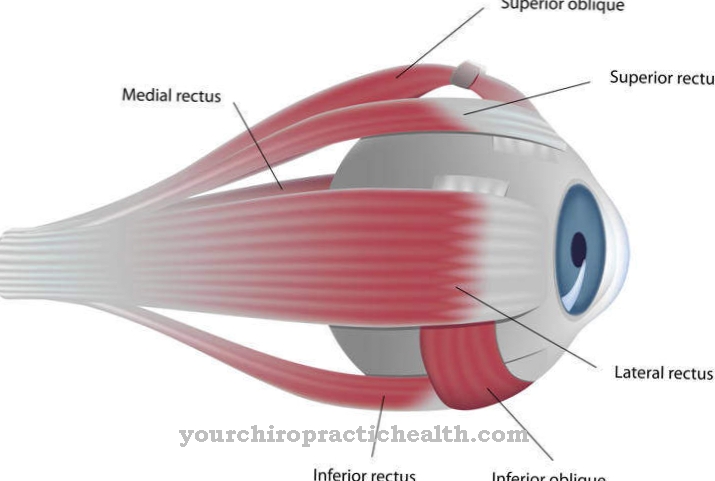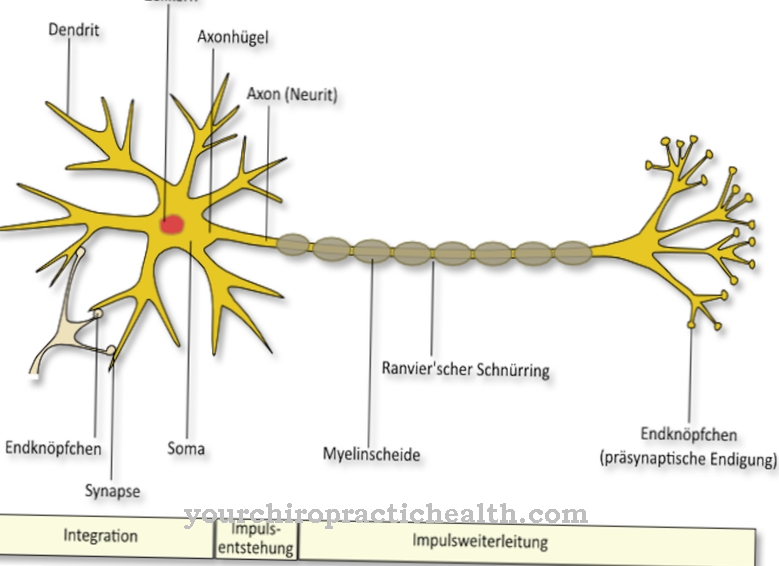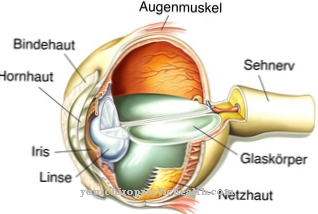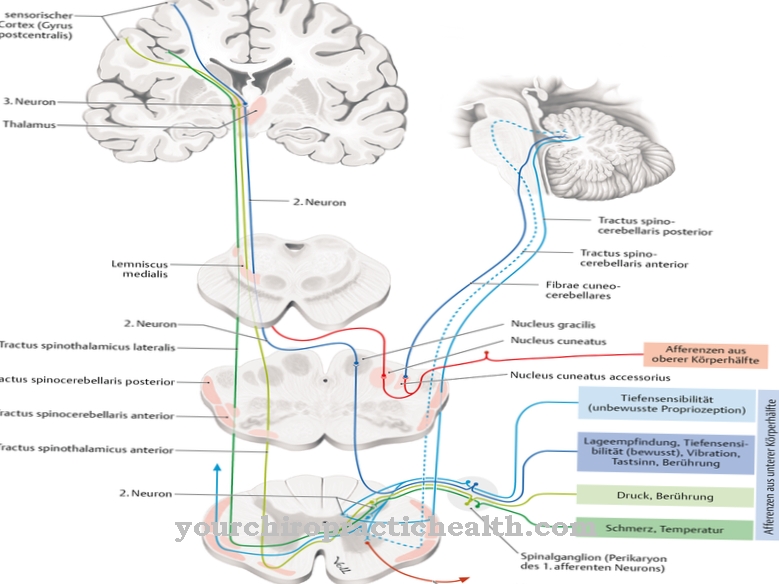The paired vocal cords are an important part of the vocal folds, primarily for human voice training. Colloquially, the vocal folds are often called vocal cords designated.
What are the vocal cords

As Vocal cord (Ligamentum vocale) is an elastic band that extends from the back surface of the thyroid cartilage (cartilago thyreoidea) to the processus vocalis of the control cartilage (cartilago arytaenoidea) and is located in the middle area of the larynx (larynx).
Like the vocal muscles (Musculus vocalis), the paired vocal cords are located in the vocal folds (Plicae vocales) and regulate the shape and tension of the vocal cords and the glottis (Rima glottidis) and thus the formation of the voice via the contraction activity of the Musculi vocalis and other larynx muscles involved ( technical language also phonation).
Anatomy & structure
The vocal cords model the medial (middle) edge of the plicae vocales as well as the rima glottidis (glottis) and are superimposed on the vocal muscles, which are also paired.
The muscle fibers of the vocal muscles pass into the vocal cords and radiate into them. The section of the vocal cords in the direction of the larynx is covered with squamous mucous membrane. As a branch of the vagus nerve, the recurrent nerve innervates (supplies) the larynx muscles responsible for vocal cord movement, to which the vocalis muscle also belongs.
The vocal folds are often referred to as vocal cords in everyday language, although the two actual vocal cords are only formed by the epithelium on the vocalis muscle and the upper layers of fibers.
Functions & tasks
The vocal cords are primarily used for voice training or phonation. If the bands vibrate through the air flow during exhalation, sounds are created.
The frequency of these vibrations and thus the basic pitch are adjusted by changes in the tension of the vocal cords. For example, the vocal folds and vocal cords are tensed for the articulation of high notes with the help of the larynx muscles, while slack muscles produce deep notes. Since men usually have longer vocal cords, they have a deeper voice.
The volume of the tones, on the other hand, is not controlled by the vocal cords, but by the strength of the air flow. The vocal color and fullness of the sound is created by the resonance space formed by the throat and the oral and nasal cavities. During inhalation, the glottis formed by the vocal cords and lips is wide open, so that the air flow can pass here and flow through the windpipe into the lower airways.
In addition, the glottis controlled by the vocal cords and muscles acts as a protective barrier through which the opening and closing of the trachea can be consciously controlled, which plays a role, for example, when moving under water.
You can find your medication here
➔ Medicines for hoarsenessIllnesses & ailments
Since the vocal cords do not have their own mucus-forming glands, they can dry out quickly, especially in winter when the heated air is dry.
As a result of the dehydration, the vocal cords are irritated, which gives the voice a scratchy and rough color. In addition, a scratchy and hoarse voice can indicate a lack of fluid supply, especially if you have colds that involve the throat. Most disorders of the functionality of the vocal cords are caused by irritation and inflammation of the vocal cord mucosa.
Pathological changes in the vocal folds usually also affect the vocal cords, as these together with the vocal muscles largely form the vocal folds. Untreated sore throats can cause new tissue formation such as vocal fold polyps (tumor-like benign growths of the mucous membrane) that limit the functionality of the vocal cords.
Vocal cord polyps usually manifest themselves in the form of diplophony (also known as biphony or double tone) and hoarseness, but if they are more severe, they can also lead to a risk of suffocation. and / or overloading of the vocal cord apparatus can be traced back, and are characterized by bumps on the edges of the vocal folds that impair the vocal cords.
Persistent cigarette smoke and allergic reactions can also irritate the vocal cords and lips. If the vocal folds are no longer able to close or open completely as a result of an operation on the thyroid gland, paralysis of the vocal cord nerve, a tumor or a viral infection, this is referred to as vocal cord paralysis, which is accompanied by impaired phonation (especially hoarseness) and Breathing problems.
In addition, vocal cord edema (Reinke's edema) can impair the functionality of the vocal cords and cause hoarseness, voicelessness and breathing difficulties.




























